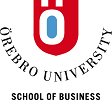No 2009:15: Do Firms Learn by Exporting or Learn to Export? Evidence from Small and Medium-Sized Enterprises (SMEs) in Swedish Manufacturing
Pär Hansson (), Kent Eliasson () and Markus Lindvert ()
Additional contact information
Pär Hansson: Department of Business, Economics, Statistics and Informatics, Postal: Örebro University, Swedish Business School, SE - 701 82 ÖREBRO, and, Sweden Growth Analysis, Studentplan 3, SE-831 40 Östersund
Kent Eliasson: Department of Economics, Umeå University, Postal: SE-901 87 Umeå and Growth Analysis, Studentplan 3, SE-831 40 Östersund
Markus Lindvert: Growth Analysis, Postal: Studentplan 3, SE-831 40 Östersund
Abstract: Using a matching approach, we compare the productivity trajectories of future exporters and matched and unmatched non-exporters. Future exporters have higher productivity than do unmatched non-exporters before entry into the export market, which indicates self-selection into exports. More interestingly, we also find a productivity increase among future exporters relative to matched non-exporters 1-2 years before export entry. However, the productivity gap between future exporters and matched non-exporters does not continue to grow after export entry. Our results suggest that learning-to-export occurs but that learning-by-exporting does not. In contrast to previous studies on Swedish manufacturing, we focus particularly on small and medium-sized enterprises (SMEs)
Keywords: productivity; learning-to-export; learning-by-exporting; matching
35 pages, November 16, 2009
Full text files
wp-15-2009.pdf
- Published as
- Pär Hansson, Kent Eliasson and Markus Lindvert, (2012), 'Do Firms Learn by Exporting or Learn to Export? Evidence from Small and Medium-Sized Enterprises (SMEs) in Swedish Manufacturing', Small Business Economics, vol 39, no 2, pages 453-472
Questions (including download problems) about the papers in this series should be directed to ()
Report other problems with accessing this service to Sune Karlsson ().
RePEc:hhs:oruesi:2009_015This page generated on 2024-09-13 22:16:32.

